When we mention Chinese porcelain, perhaps you will associate it with the simplicity and profoundness of Ru kiln, the lustrous beauty of Ding kiln, and the natural elegance of Jun kiln.
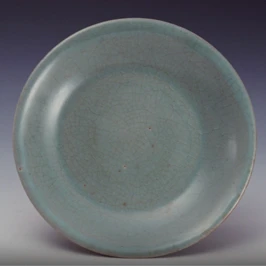
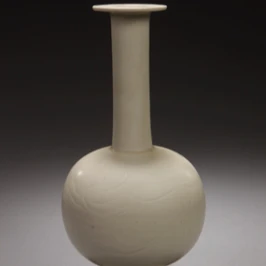
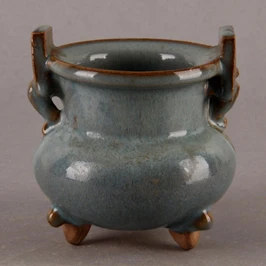
Your mind will conjure up one classic masterpiece after another.
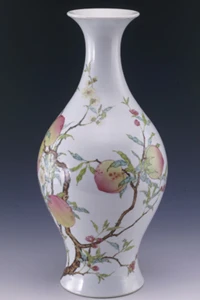
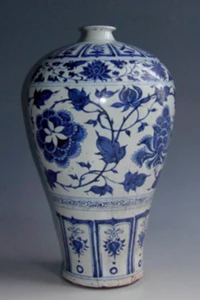
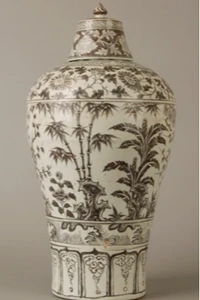
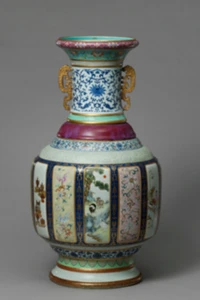
However, the "BLAND DE CHINE - Dehua Porcelain Exhibition" at the National Museum of China presents us with another aspect of porcelain.
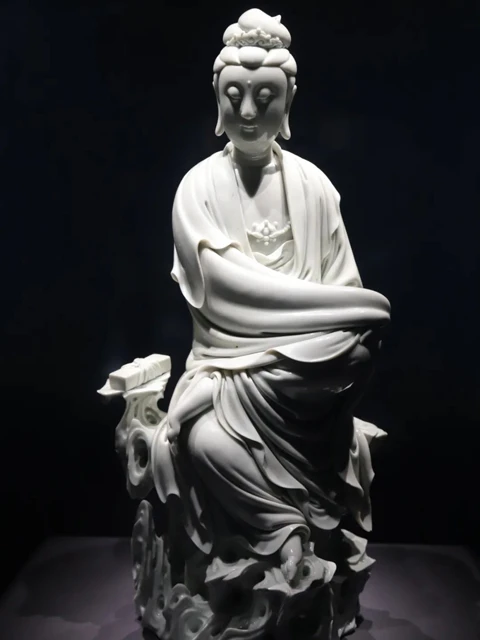
This artwork, created by a contemporary artist, breaks through our usual imagination of materials. It uses porcelain to simulate thin and translucent clothing, portraying the texture and folds of the garments flawlessly. The depiction of individual strands of hair is exquisitely detailed, leaving viewers in awe.
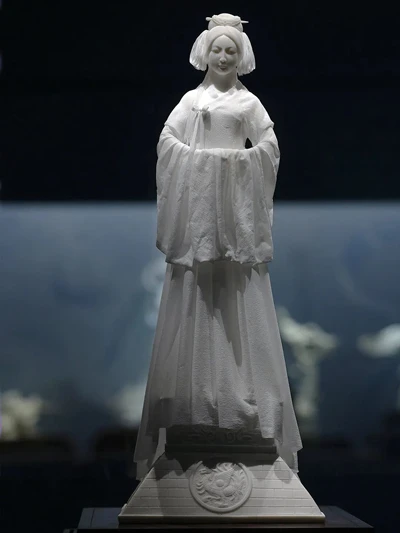
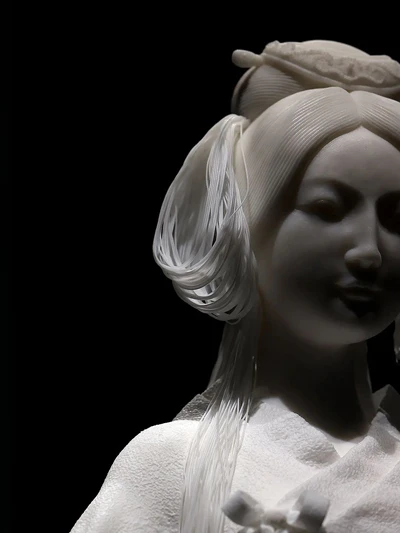
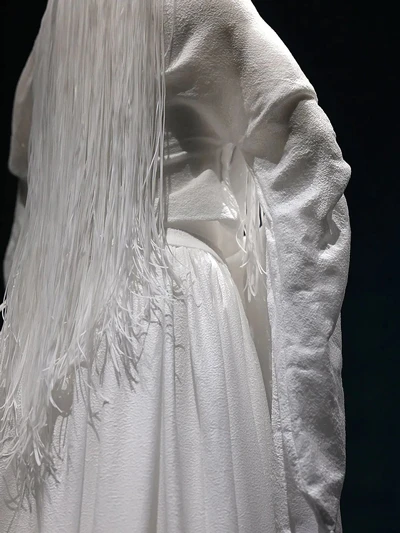
The porcelain is made to resemble paper, even imitating the rough edges of paper to a remarkable degree. Even when magnified several times, it is difficult to discern that this is actually a piece of Chinese porcelain.
In the long river of history, the skilled craftsmen of ancient China fully unleashed their imagination and created some porcelain pieces that deviate from our stereotypical impression of porcelain. Let us appreciate these Chinese porcelain pieces that are the least like porcelain.
Stone or Porcelain
During the Qing Dynasty, it was popular to use porcelain to imitate various materials. The craftsmanship of the finished products was exquisite and extraordinary.
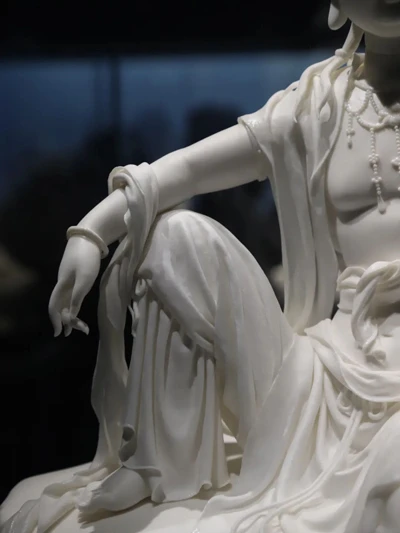
Xu Zhiheng wrote in "Yinliuzhai Shuo Ci": "At first glance, it does not resemble porcelain. It is only upon careful examination that one can perceive its magical transformation of glaze." This means that at first glance, one would not think it is porcelain, and it requires careful discernment to appreciate its intricacies.
Imitating stone glaze uses colored glazes that resemble the color and texture of stones, depicting stone patterns such as marble glaze, spotted stone glaze, tiger skin stone glaze, pebble stone glaze, and turquoise glaze.
This porcelain piece, which resembles a mountain, imitates the shape of mountain peaks, with varying heights and colors resembling natural mountain scenery. It is first fired into a white body and then glazed and fired at low temperature. The rough texture of the rocks is simulated seamlessly, creating a lifelike effect.
This treasure from the Beijing Art Museum is uniquely shaped, consisting of two square plates that fit together. The patterns imitate the colors and patterns of spotted stones, with a perfect resemblance.
The ink brush holder has four sides, each inscribed with calligraphy in the four script styles of regular script, running script, clerical script, and seal script, all composed by Emperor Qianlong.
Both the inside and outside of this brush holder are covered with imitation stone glaze, perfectly capturing the texture of jade.
This vase is entirely covered with imitation stone glaze, with a chilong dragon relief on the neck and shoulder. The dragon is portrayed using realistic techniques, capturing its essence and presenting a natural and lifelike appearance.
Copper or porcelain
Ancient copper red is an innovation during the Qianlong period, which imitated ancient bronze in terms of shape, color, and decoration. Some of them, embossed copper patterns on the tea-leaf glaze with a color similar to ancient bronze. Others added red, blue, and green enamel rust spots to make the effect more realistic.
The firing process of ancient copper red is complex. First, it needs to be fired at high temperatures to achieve the color of tea-leaf glaze. Then, gold enamel and green rust spots are painted on it. After that, it is fired again at low temperatures in the kiln. Only in this way can the ancient and mottled effect be achieved. Just like this flower cup, the glaze color is simple and the patterns are clear. The natural and realistic rust spots on the bottom are admirable.
This incense burner has the shape, glaze color, and patterns imitating bronze ware. It has a flat short neck and double ears. The whole body is covered with tea-leaf glaze. It is finely decorated with scroll patterns, interlocking patterns, Ruyi cloud head patterns, and dragon patterns. The craftsmanship is quite exquisite, making it a masterpiece of Qianlong official kiln.
This vase has a luxurious mouth, a narrow neck, and a bulging belly. The shoulders are symmetrically attached with molded elephant ears. It has a calm and lusterless glaze as the base, shimmering yellow spots in the dark green background, and is adorned with rust spots and bronze ware characteristic patterns, appearing ancient and elegant.
This vase has an outward flared mouth, a bulging belly, and an outward flared foot. There are spear patterns on all four sides of the body. The inside and outside are both based on a bronze color, supplemented with turquoise glaze and gold and silver enamels, with additional decorations of bronze rust spots.
Wood or porcelain
Imitation wood porcelain, as the name suggests, is porcelain that simulates the texture of wood. It is mainly painted with two different glazes, red and black, to create wood patterns. It appeared in the Yongzheng period and flourished in the Qianlong period. The production of imitation wood porcelain was more extensive during the Qianlong period, and the glaze surface was more varied compared to the Yongzheng period.
Emperor Yongzheng vigorously promoted ink and green landscapes. Under this aesthetic guidance, many exquisite imitated wood porcelain pieces were produced.
The imitated wood grain glaze ink brush holder from the Palace Museum is painted with natural wood texture in reddish-brown color on the outer and foot parts, presenting a lifelike and elegant image. The middle painting part is mostly rendered in ink green color, depicting mountains, rocks, and trees, with a strong ink charm.
The imitated wood grain glaze famille rose figure ink brush holder, now housed in the National Museum of China, is decorated with imitated wood grain glaze on the outer edge, foot, and inside of the vessel. The middle part of the outer wall is painted with famille rose landscape figures on a white glazed background. A literati in brocade robe is sitting under a tree, accompanied by a book boy.
During the Qianlong period, there were two common forms of imitated wood grain glaze bowls. One had white glaze on the inside and wood grain painted on the outside, while the other had wood grain painted both inside and outside.
This bowl is the latter form with wood grain painted both inside and outside. The wood grain pattern is clear, and the glaze surface has a realistic texture.
The Duomu pot is a vessel used by ethnic minorities in Manchuria during the Yuan Dynasty to hold milk. This wood grain of this imitated wood porcelain is elusive, resembling the grain of burl wood, giving it a solemn and elegant appearance. The body of the vessel is in the shape of a dragon, with a phoenix head as the spout and a golden lion as the knob. The craftsmanship is exquisite.
Lacquer or porcelain
Imitation lacquerware during the Qianlong period is a unique type of imperial porcelain. It includes various types such as imitation carved lacquer, imitation vermilion lacquer, imitation black lacquer with gold decoration, and inlaid lacquerware with mother-of-pearl. Plates and bowls are the most commonly seen.
It is said that carved lacquerware originated in the Tang Dynasty and flourished in the Song Dynasty. The production method is to apply layers of prepared lacquer on a copper or wooden core, usually with eight or nine layers, and sometimes up to hundreds of layers.
After lacquering, the relief carving is immediately done while the lacquer is not completely dry. Then it is dried and polished. The imitation lacquer porcelain of the Qianlong period, on the other hand, uses porcelain clay as the core. When the clay is not completely dry, small seal stamps with patterns are closely stamped on the core, creating a dense decoration similar to carved lacquerware.
This bowl imitates carved lacquerware, with full gold decoration inside. The outer wall is covered with red glaze, imitating the technique of carved lacquer. There is a carved relief pattern on the mouth rim, and an orderly brocade pattern is engraved on the abdomen. Near the foot, there is a lotus petal pattern. It is almost indistinguishable from real lacquerware, demonstrating Qianlong period superb porcelain-making techniques.
This was Emperor Qianlong's favorite. He greatly admired this plate and felt that the quality of the imitation even surpassed the original.
This lidded bowl is similar to the previous plate, also in the shape of a chrysanthemum petal. Both the inside and outside of the bowl are covered with imitation vermilion lacquer glaze, with a realistic color and texture. There is a poem by Emperor Qianlong inside the lid.
This plate imitates the black lacquerware with gold decoration technique. The inside and bottom of the plate are covered with white glaze. On the glossy black glaze, peach patterns are painted with gold, and red is used to embellish the peach blossoms and fruits, creating a luxurious and dignified color scheme.
In the world of porcelain, there are not only "typical" porcelain pieces but also the "atypical" porcelain pieces described in this article. They represent the pinnacle of ancient Chinese porcelain-making techniques and are an indispensable part of Chinese porcelain history.
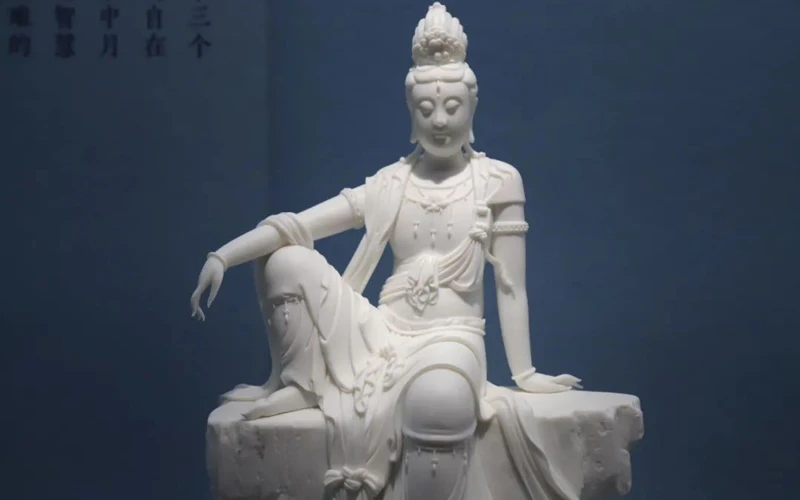
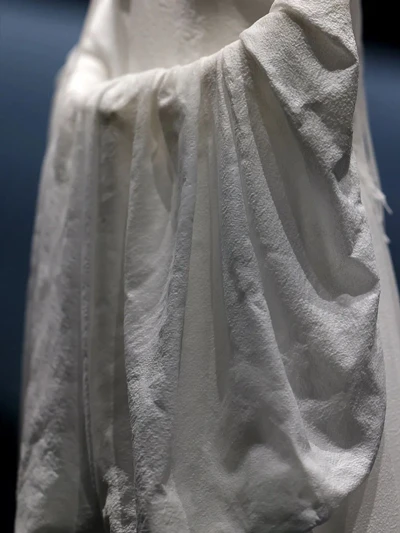
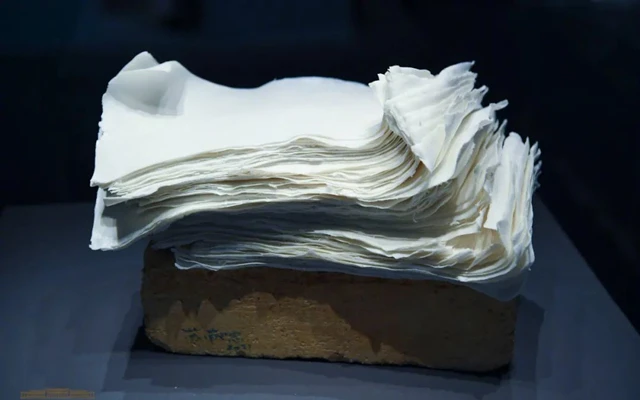
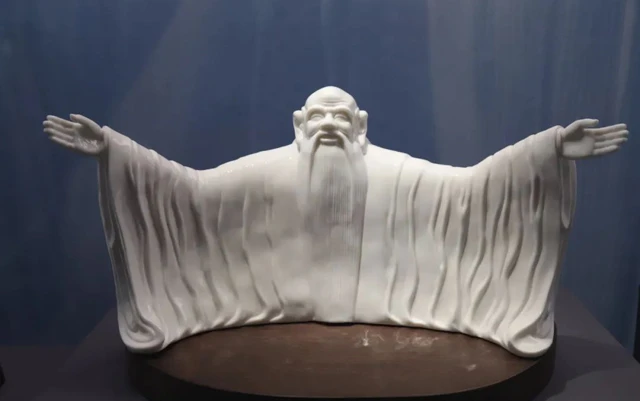
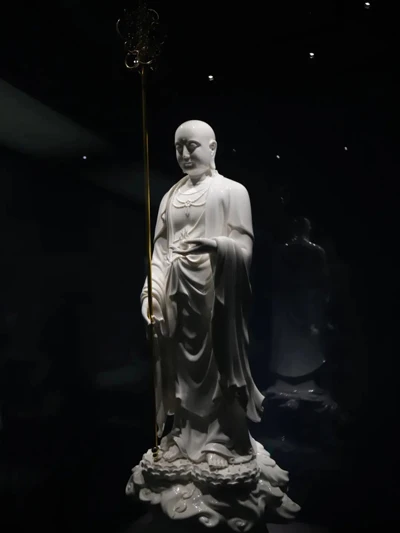
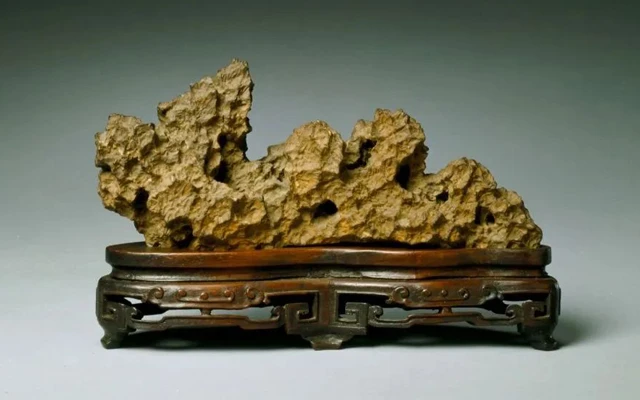
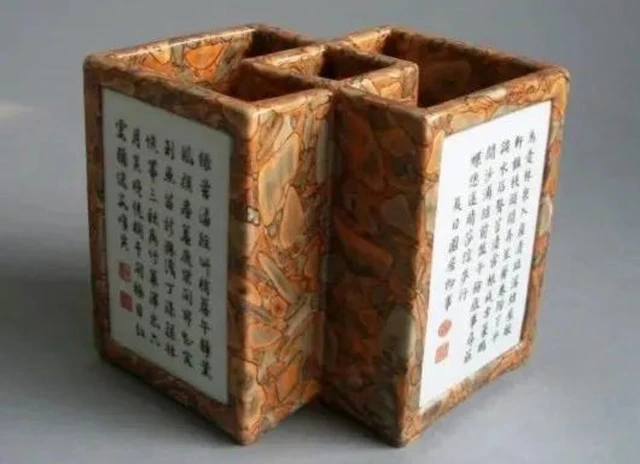
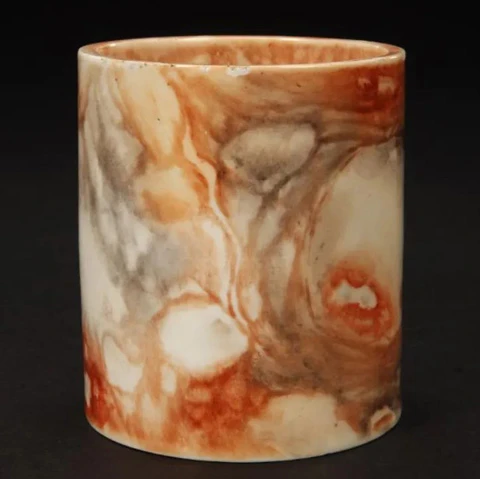
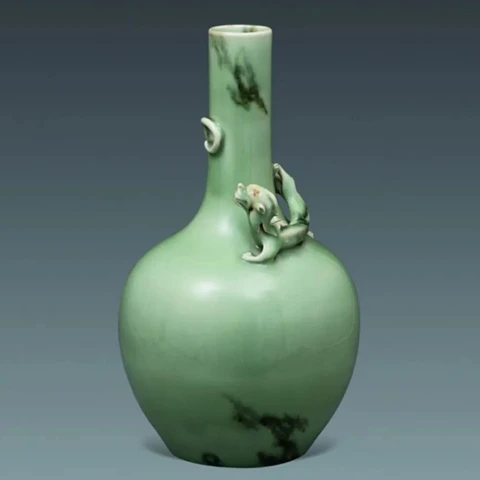
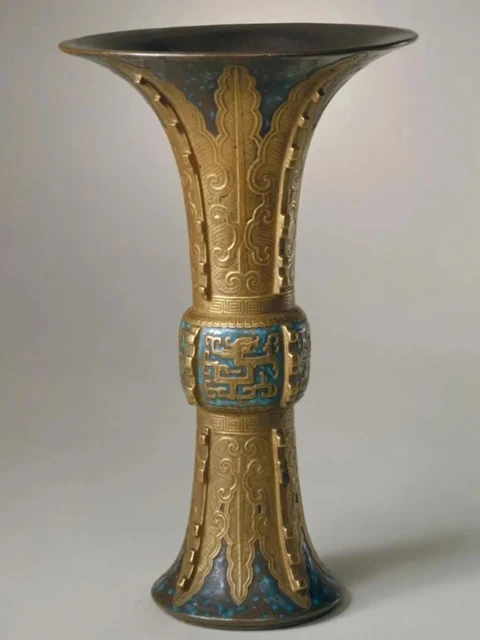
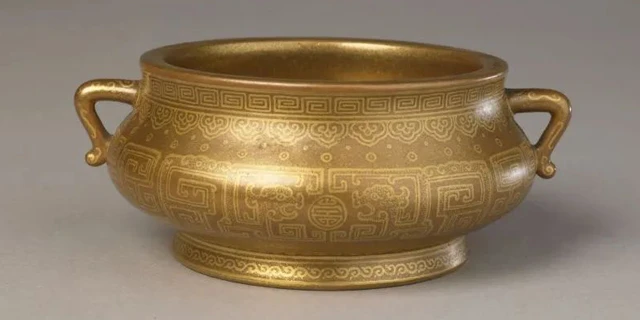
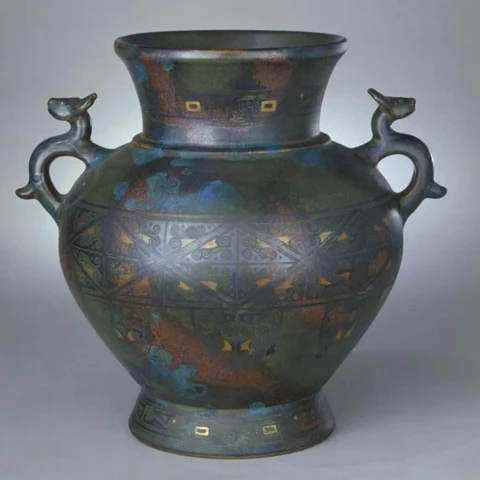
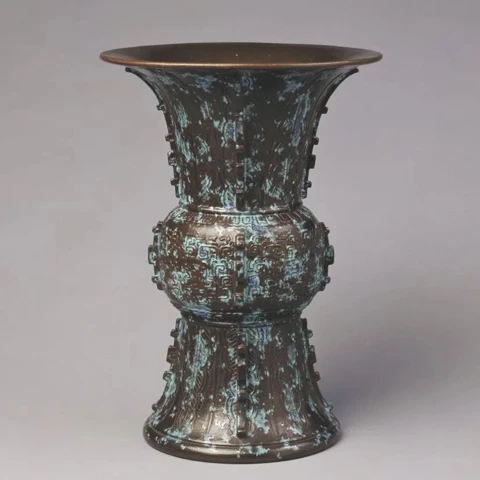
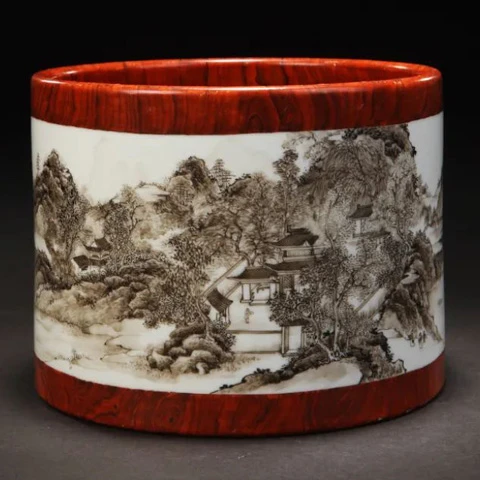
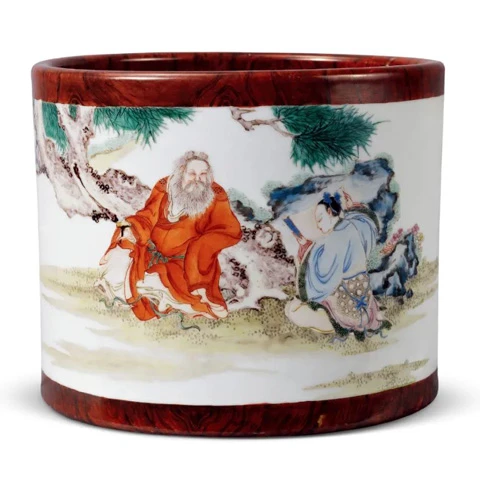
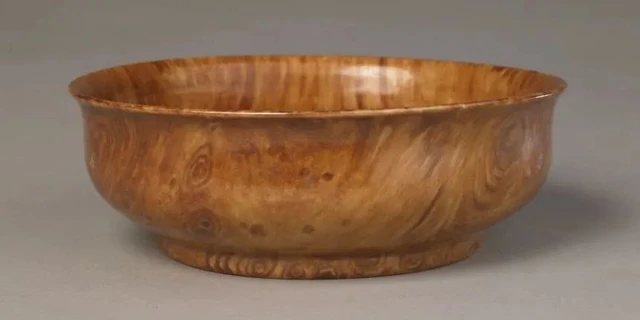
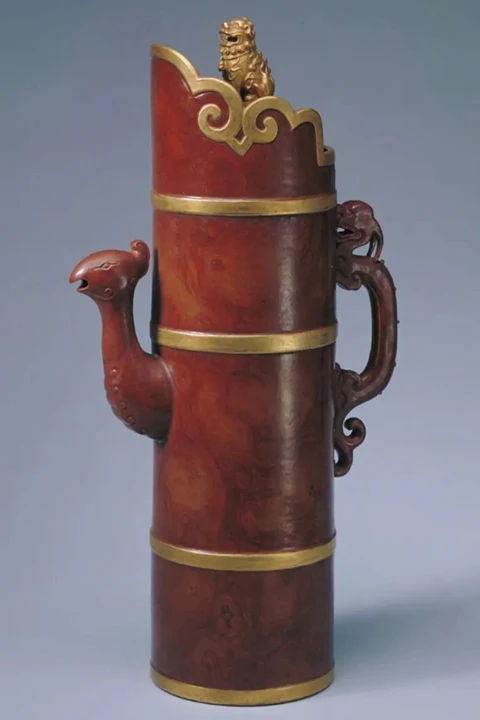
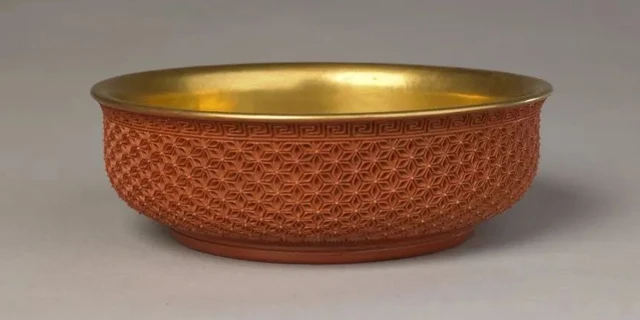
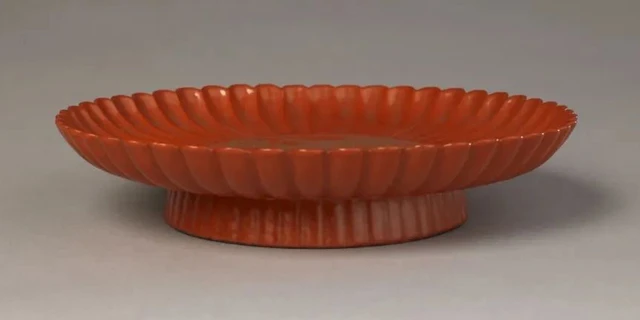
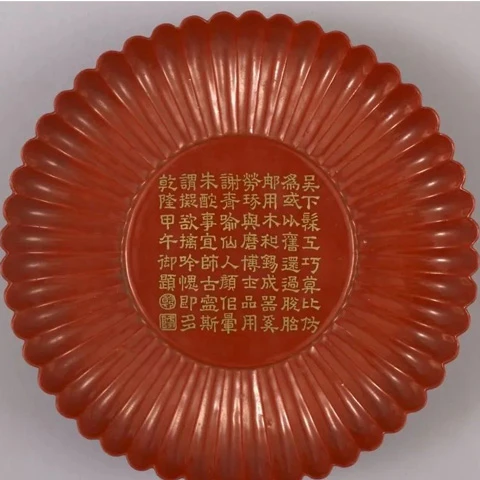
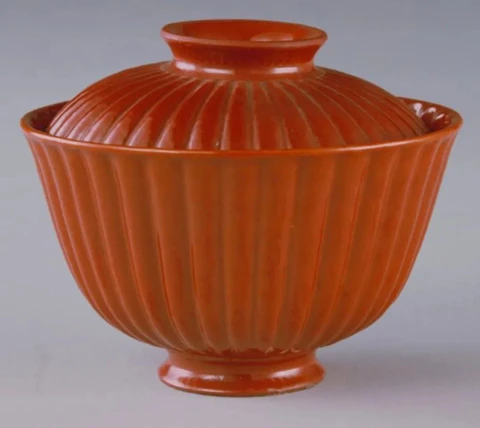
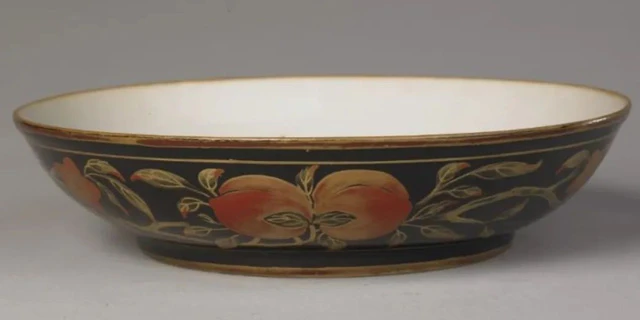


I refuse to believe that that pile of paper made of basically stone😳